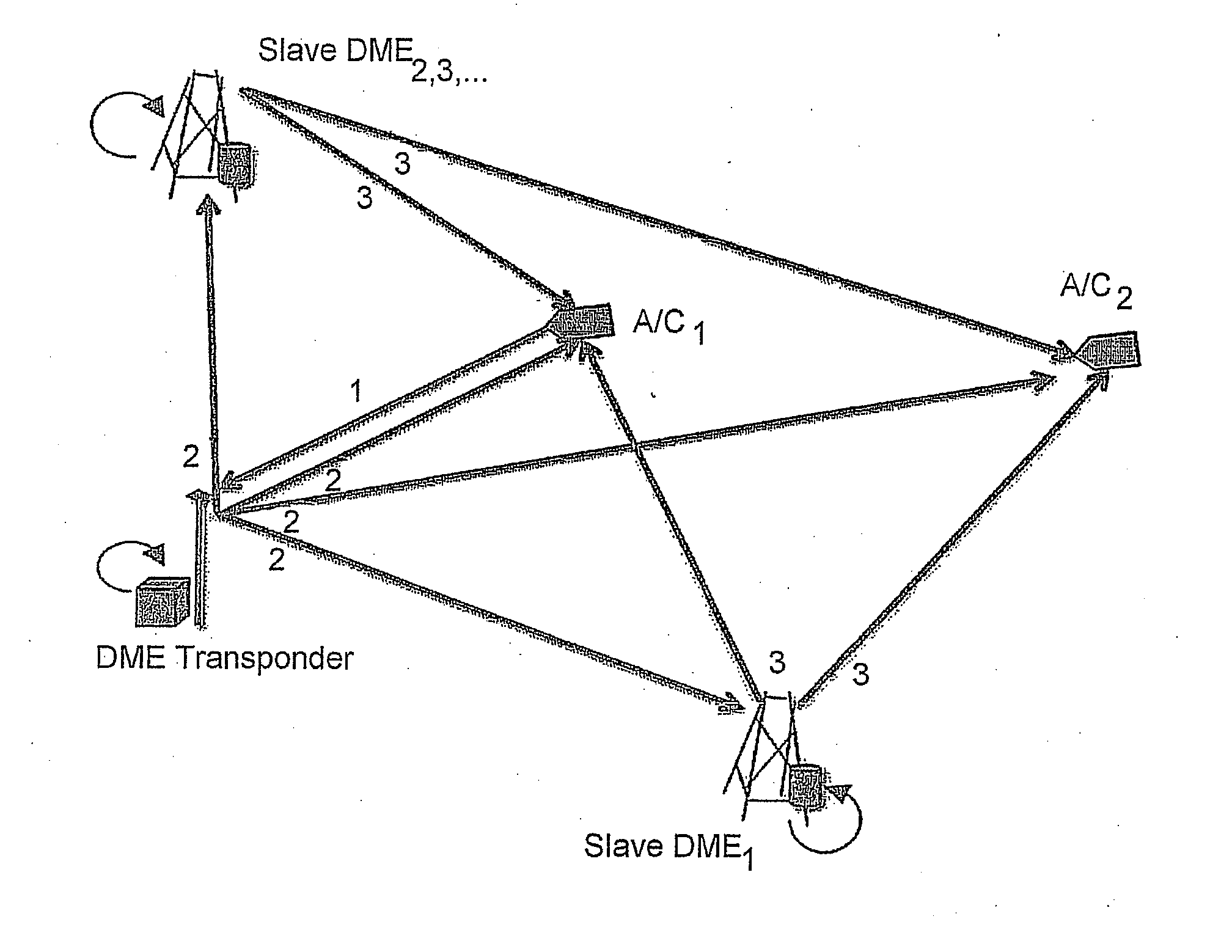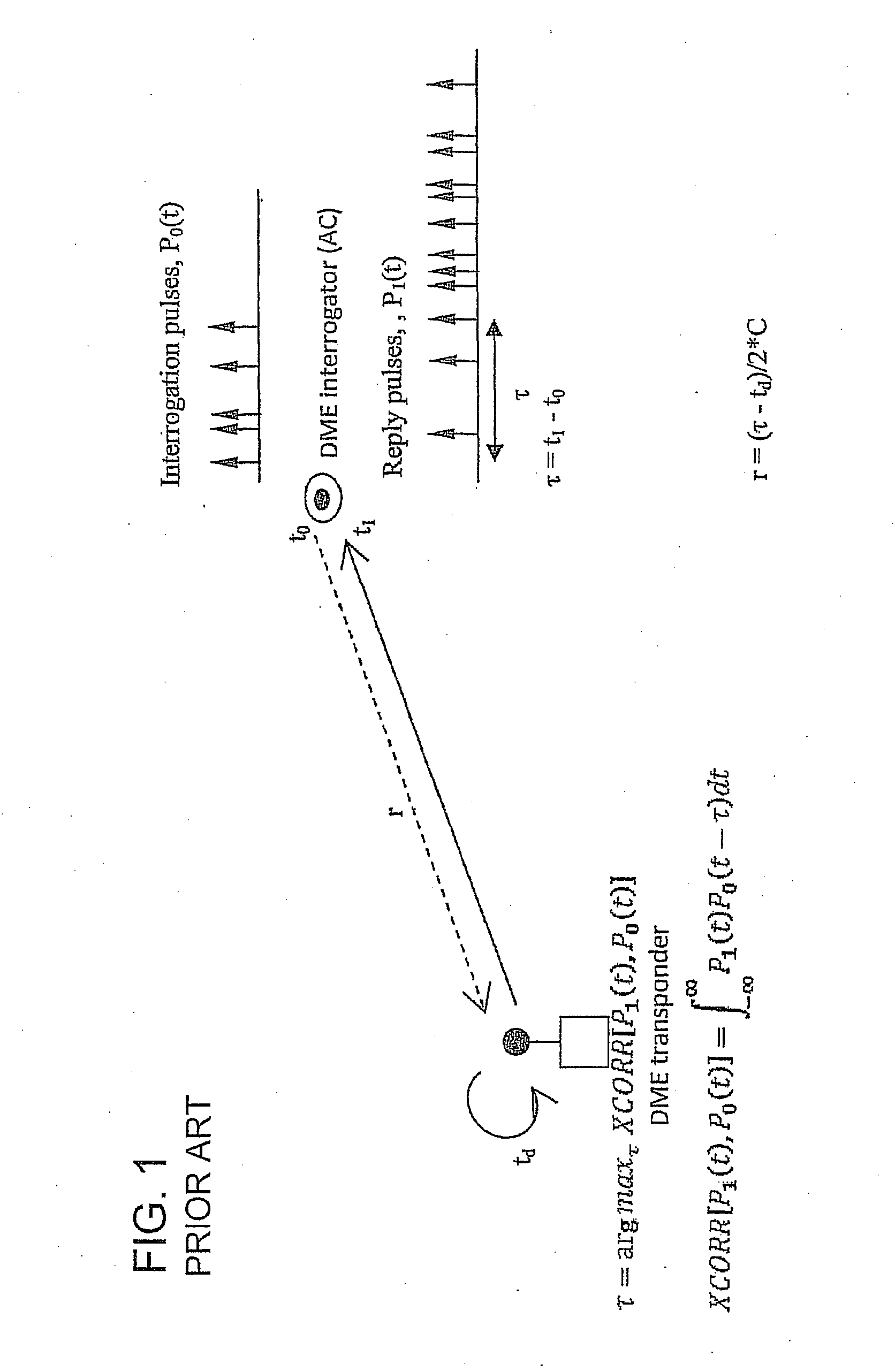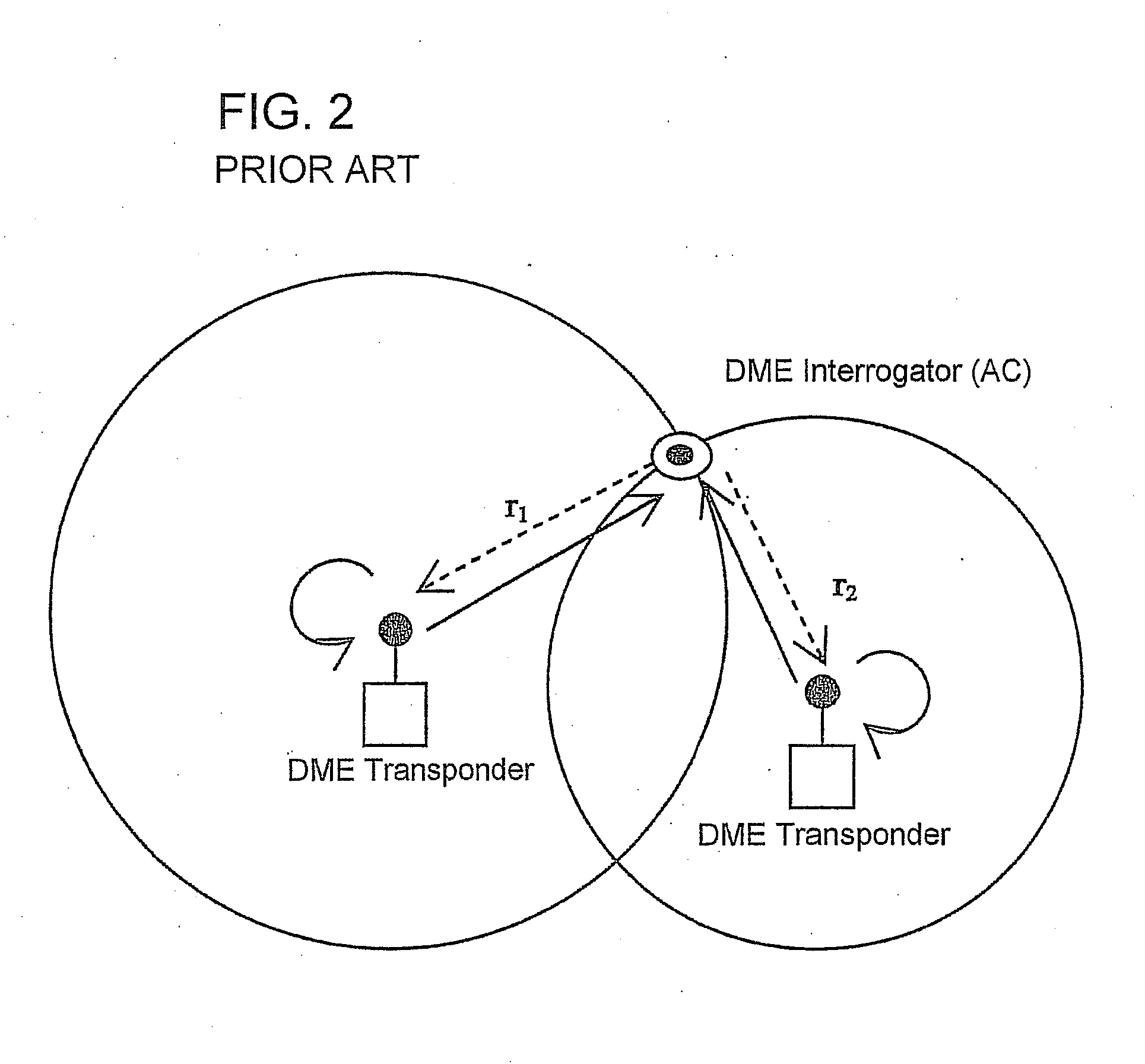System and method for aircraft navigation using signals transmitted in the dme transponder frequency range
a technology of aircraft navigation and transponder frequency, applied in the field of aircraft navigation using transponder frequency, can solve the problems of existing gnss-based aircraft navigation systems, significant amount of signal garbling and data loss, and insufficient etc., and achieve poor dme-dme mlat position accuracy
- Summary
- Abstract
- Description
- Claims
- Application Information
AI Technical Summary
Benefits of technology
Problems solved by technology
Method used
Image
Examples
Embodiment Construction
[0066]The present invention provides a navigation infrastructure in lieu of fully-functioning GPS and traditional NAV AID, such as VOR and NDB, by utilizing the existing DME ground station network and SBS GS network. The present invention enables a greater synergy between the DME network and SBS GS network to provide a more robust, economic, and better integrated navigation capability that can act as a backup to the existing GNSS-based aircraft navigation system.
[0067]According to a first embodiment of the present invention, there is provided a system and method for determining aircraft position by passively listening to DME transponder ground stations broadcasting periodic navigation heartbeat signals to enable aircraft to perform self-positioning and navigation by multilateration, independent of GPS capability. The periodic broadcast signal eliminates the need for aircraft to interrogate the DME ground stations, which greatly increases the system capacity (theoretical capacity app...
PUM
 Login to View More
Login to View More Abstract
Description
Claims
Application Information
 Login to View More
Login to View More - R&D
- Intellectual Property
- Life Sciences
- Materials
- Tech Scout
- Unparalleled Data Quality
- Higher Quality Content
- 60% Fewer Hallucinations
Browse by: Latest US Patents, China's latest patents, Technical Efficacy Thesaurus, Application Domain, Technology Topic, Popular Technical Reports.
© 2025 PatSnap. All rights reserved.Legal|Privacy policy|Modern Slavery Act Transparency Statement|Sitemap|About US| Contact US: help@patsnap.com



